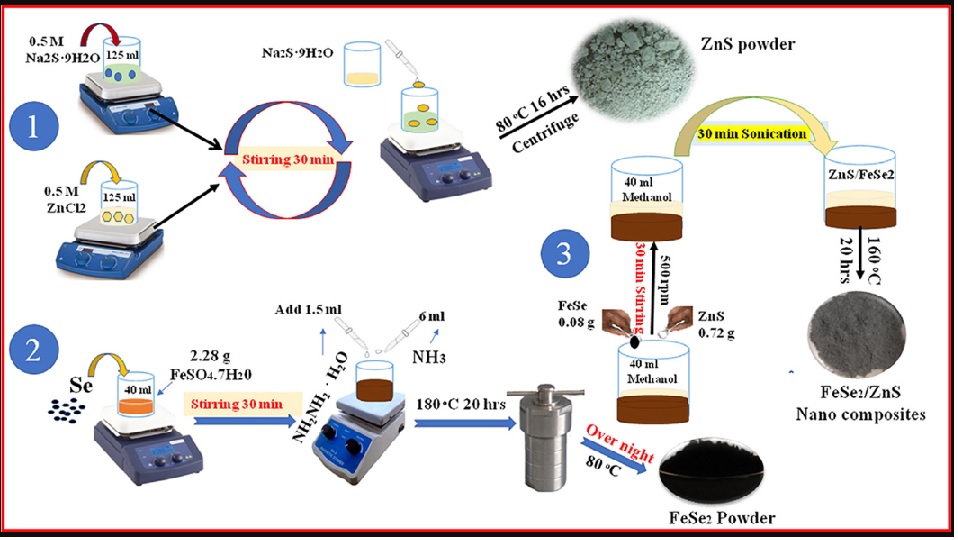Facile synthesis of hierarchical ZnS@ FeSe2 nanostructures as new energy-efficient cathode material for advanced asymmetric supercapacitors
Graphical abstract

Abstract
We have effectively synthesized ZnS, FeSe2, and their nanocomposite in this study using a straightforward and affordable solvothermal process. We also investigate for the first time their ideal electrochemical performance for supercapacitors. The ZnS and FeSe2 positive electrodes exhibit capacitances of 266.2 F g-1 and 294.3 F g-1, respectively, with fascinating nanostructures and morphology. Their respective nanocomposites, AZ-1, AZ-2, and AZ-3, deliver capacitances of 356.8, 444.4, and 326.1 F g-1 with significant rate performance in aqueous solution in three-electrode assembly. The lowest ESR and Rct values of AZ-2 electrodes, which improved conductivity and charge transport kinetics and created a synergistic effect between ZnS and FeSe2 electrodes, are responsible for their exceptional capacitative performance. We built an asymmetric supercapacitor (AZ-2/AC) with an optimal voltage of 1.6 V, which demonstrated great power density (6250 W kg-1) and energy density (33 Wh kg-1) with remarkable cycling stability (88.1%) in an aqueous electrolyte after 12,000 cycles. As a result, FeSe2-based nanocomposites are strong contenders for realizing high energy and power delivery for practical applications.

The focus in recent years has been on developing innovative, green technologies for energy production and storage. Nanocomposite materials are attractive due to their exceptional performance,…

With the rapid development of biomedical technology, biodegradable and implantable energy storage devices for …

Electrochemical energy storage devices are vital for renewable energy integration and the deployment of electric vehicles. Ongoing research seeks to create new materials with innovative…

